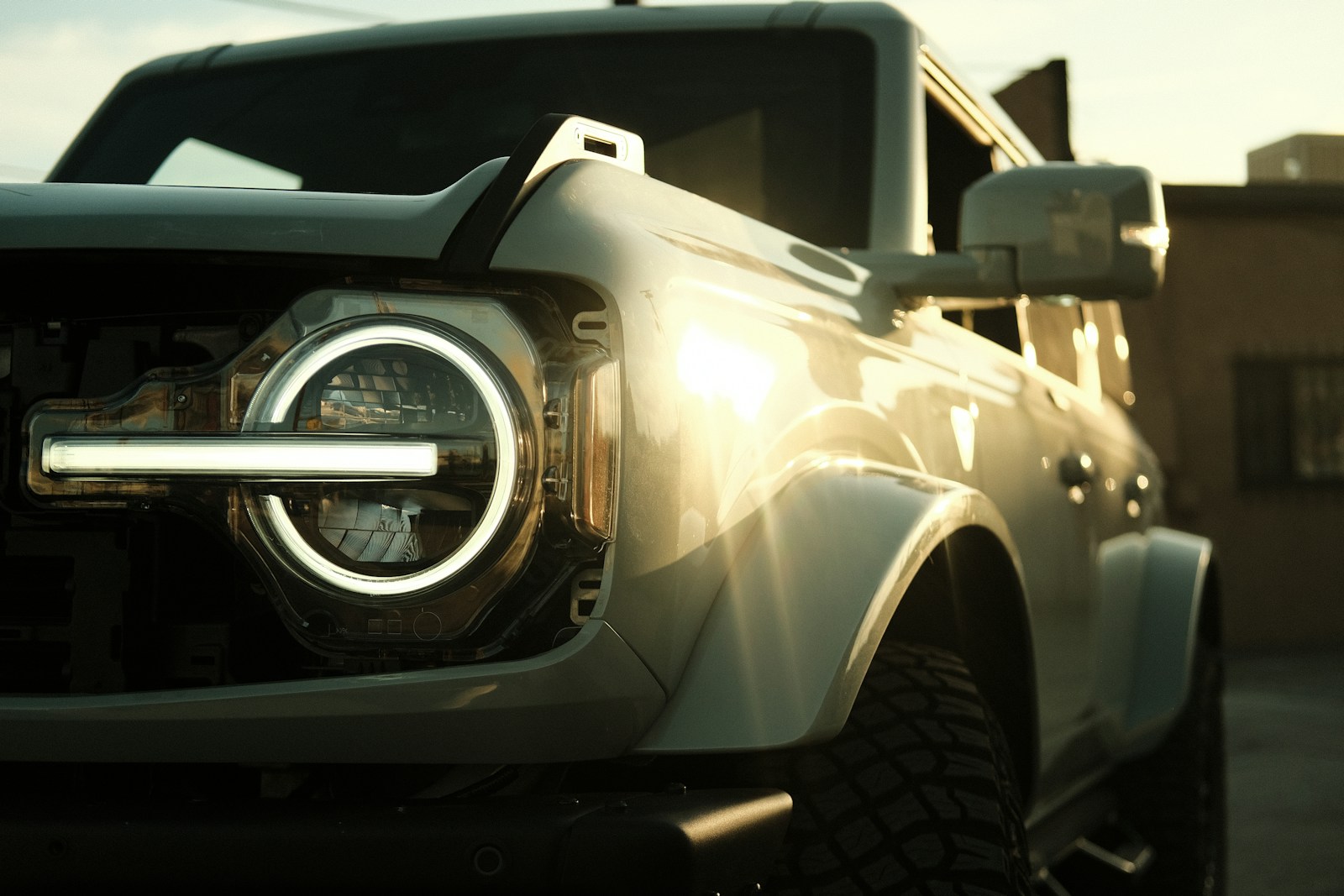
Steven Spielberg, a name synonymous with groundbreaking cinema and narratives that often leap beyond the present, possesses a unique sensibility for both historical significance and future possibilities. His films frequently feature vehicles as integral components, a testament to his appreciation for their design, technology, and symbolic power. Just as Spielberg’s cinematic works consistently push the boundaries of storytelling and visual effects, his personal interests, which span from vintage classics to modern electric marvels, reveal a profound engagement with innovation. This keen eye for detail and the future extends naturally to the world of concept cars, which are, in essence, prototypes of tomorrow’s transportation.
Concept cars are more than just design exercises; they are tangible projections of humanity’s aspirations and technological capabilities, offering a compelling glimpse into what our motoring future might hold. The truly great ones, as articulated within the industry, generate excitement and inspire radical shifts in design and engineering. This exploration delves into a selection of these visionary automotive creations, drawing parallels to the imaginative and forward-looking spirit that defines Spielberg’s acclaimed body of work. Each car stands as a monument to engineering ingenuity and design audacity, embodying the very essence of a ‘futuristic vision’ that resonates deeply with a filmmaker celebrated for bringing tomorrow to life on screen.
From the audacious experiments of the mid-20th century to the sophisticated designs of more recent times, these concept cars represent pivotal moments in automotive history. They are not merely modes of transport but expressions of art, science, and cultural dreams, much like Spielberg’s own diverse car collection which includes both timeless allure and modern echoes. They capture a spirit of constant pursuit of excellence, challenging conventions and daring to imagine what could be, reflecting a similar drive that has cemented Spielberg’s legacy as one of cinema’s most celebrated directors.
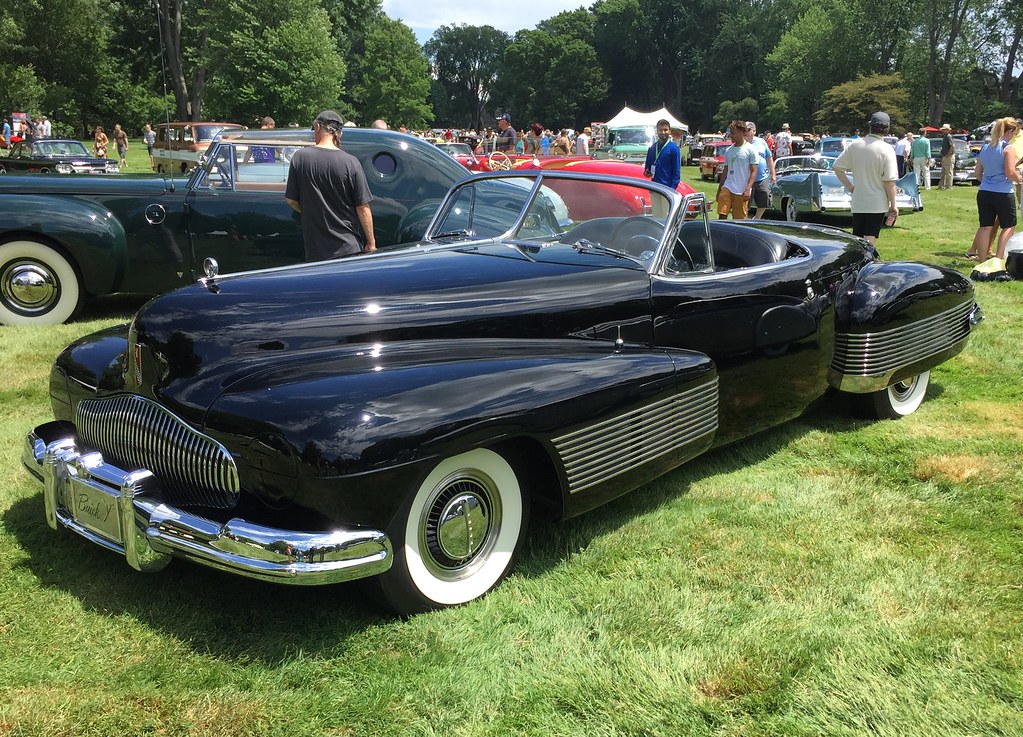
1. **1938 Buick Y-Job: The Genesis of Automotive Foresight**The 1938 Buick Y-Job holds a distinguished place in automotive history, often hailed as the industry’s very first concept car. Conceived by General Motors design chief Harley Earl, this vehicle emerged during an era when cars still featured remnants of horse-drawn carriages, such as running boards and prominent external headlights. The Y-Job bravely jettisoned these conventions, offering the American public a stunning preview of the sleek, integrated designs that would define the automobiles of the 1940s and 1950s.
Its revolutionary features included concealed headlights, elegantly built directly into the fenders, a design innovation that would become a standard aesthetic for decades to come. Furthermore, the Y-Job showcased power windows, a luxury amenity that was virtually unheard of at the time, offering a touch of convenience that was profoundly futuristic. The vehicle also sported smaller, 13-inch wheels adorned with wide-white-wall tires, a departure from the giant spoke wheels prevalent in its time, giving it a lower, more streamlined profile.
Based on a Buick Super chassis, the Y-Job was not merely a static display; it was fully functional, with Harley Earl himself regularly driving it. This public demonstration of a truly radical design ensured that it turned heads and sparked imaginations, serving as a powerful statement of what was possible. It epitomized the pioneering spirit of envisioning and then building the future, much like a director’s first audacious storyboard setting the tone for an entire cinematic movement.
Its significance lies not only in its innovative features but in its role as a harbinger of things to come, demonstrating how thoughtful design could reshape expectations and set new benchmarks for style and technology. The Y-Job perfectly embodies the idea that a futuristic vision begins with a bold departure from the status quo, offering a tangible dream that inspires widespread adoption and evolution.
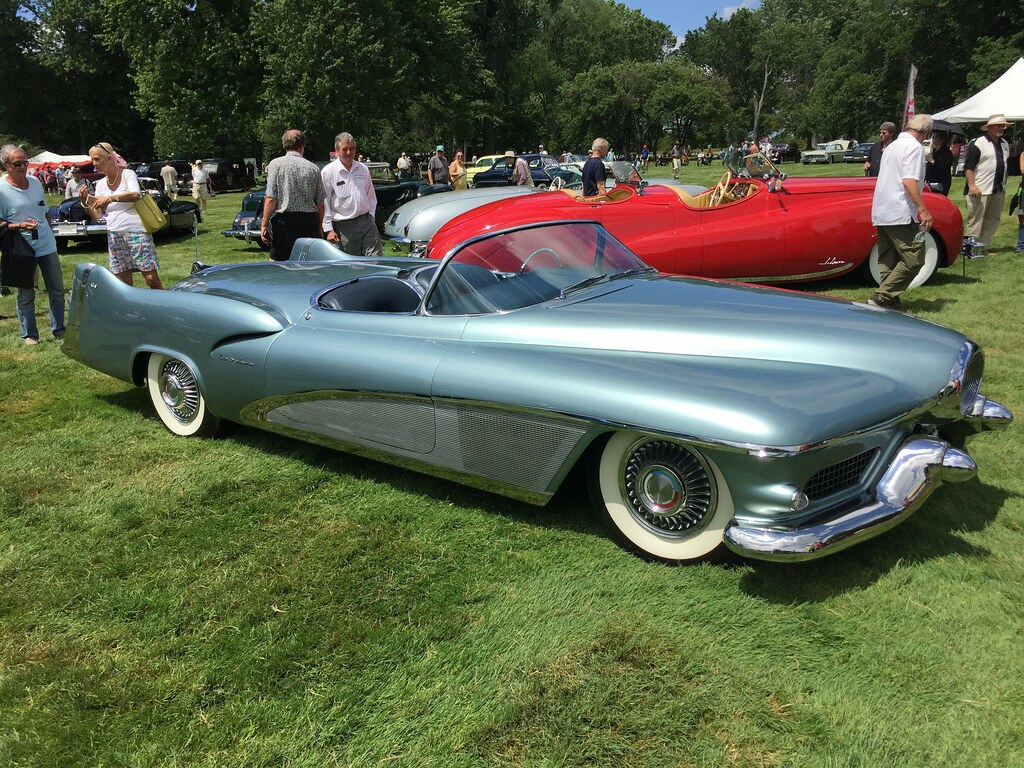
2. **1951 General Motors LeSabre: Post-War Aviation Aesthetics and Hidden Tech**Returning from World War II, many American minds were captivated by the marvels of aviation, and this fascination profoundly influenced automotive design. The 1951 General Motors LeSabre concept car, another brainchild of Harley Earl, masterfully captured this zeitgeist, providing an early glimpse into the styling trends that would dominate the 1950s. Its very form seemed to echo the sleek lines and powerful presence of jet aircraft, translating aerial prowess into ground-bound elegance.
The LeSabre was a pioneer in several design aspects, being the first car to exhibit both a curved windshield and distinctive tailfins, elements that swiftly became ubiquitous symbols of 1950s American automotive design. Its front fascia featured an oval-shaped intake that evoked a jet engine, a stunning visual trick that retracted and spun to reveal two side-by-side headlights. At the rear, a giant central brake light glowed with the intensity of a jet fighter’s afterburner, completing the aviation metaphor with dramatic flair.
Beyond its striking visuals, the LeSabre was packed with what were then considered ‘nifty details’ of advanced technology. It boasted a rain sensor that could automatically close the power top, a feature that sounds perfectly modern even today. Electric jacks integrated into the chassis simplified tire changes, showcasing a commitment to convenience and utility. Furthermore, a rear-mounted transmission contributed to an optimal weight distribution and a lower center of gravity, indicating a sophisticated engineering approach.
Much like the Y-Job, the LeSabre was fully operational and served as Harley Earl’s daily driver, ensuring its visibility and impact. It was a vehicle that wasn’t afraid to project a future intertwined with the cutting edge of contemporary technology and design, reflecting an aspiration to merge speed, power, and sophisticated aesthetics in a manner that would surely appeal to a visionary like Spielberg.
Car Model Information: 2022 Lincoln Aviator Reserve AWD
Categories: 1950s cars, All articles with unsourced statements, Articles with short description, Articles with unsourced statements from February 2011, Articles with unsourced statements from July 2025
Summary: The General Motors Le Sabre is a 1951 concept car, and possibly the most important show car of the 1950s. The brainchild of General Motors Art Department head Harley Earl, it introduced aircraft-inspired design elements such as the wrap-around windshield and tail fins, which became common on automotive designs during the second half of the decade.
The Le Sabre is owned by the GM Heritage Center, and still occasionally appears at car shows.
This was GM’s first use of the Le Sabre name, which would be later adopted by Buick for the 1959 Buick LeSabre.
Get more information about: General Motors Le Sabre
Buying a high-performing used car >>>
Brand: General Motors Model: LeSabre
Price: $39,000 Mileage: 66,933 mi.
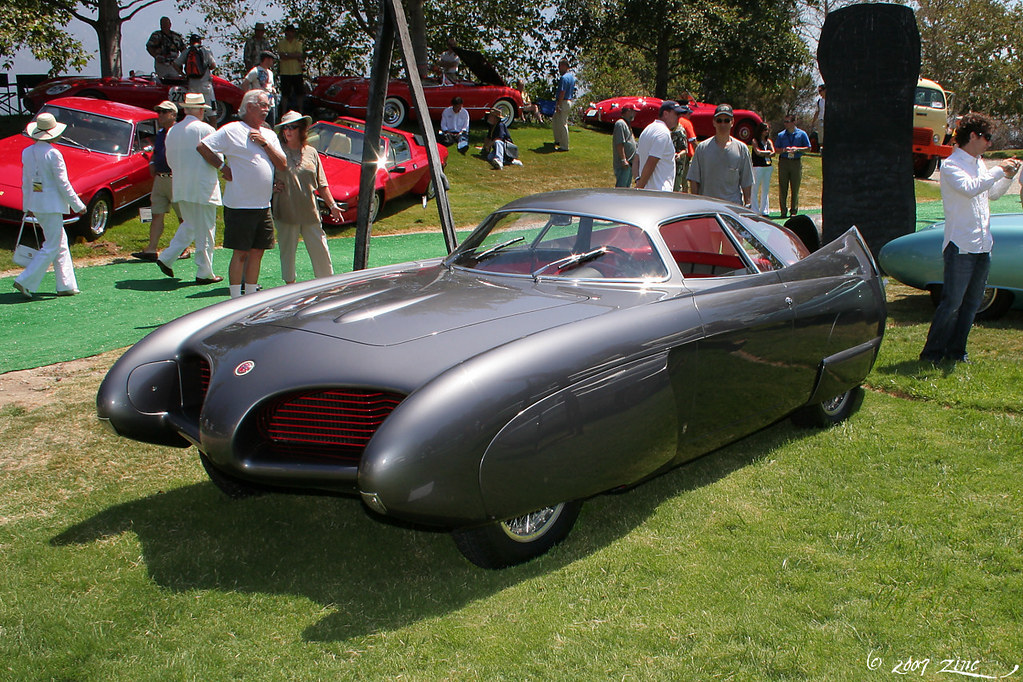
3. **1953-1955 Alfa Romeo Alfa BAT Cars: Sculpting the Future Through Aerodynamics**The Alfa Romeo Berlina Aerodynamica Technica (BAT) series of cars – BAT 5, BAT 7, and BAT 9 – represent a pivotal moment in automotive design, showcasing a relentless pursuit of aerodynamic efficiency as a cornerstone of beauty. Designed by Bertone, these concepts were not merely styled; they were sculpted by the wind, demonstrating to the world that “cheating the wind could be a beautiful thing.” This series was a testament to the scientific and artistic merging of form and function.
Each iteration, introduced successively at the Turin Auto Show – the gray BAT 5 in 1953, the blue BAT 7 in 1954, and the silver BAT 9 in 1955 – pushed the boundaries of automotive shape. Their exaggerated fins, curved windows, and flowing lines were meticulously crafted to minimize drag, offering insights into how vehicles could move through air with unprecedented grace and speed. These cars were less about immediate production and more about pure experimentation, a speculative endeavor into the future of motion.
The BAT cars were radical for their time, challenging the prevailing design philosophies by prioritizing airflow and efficiency above all else. This scientific approach to aesthetics resulted in truly unique and iconic shapes that, even over fifty years later, retained their avant-garde appeal. The fact that the original three cars fetched nearly $15 million at auction in 2020 speaks volumes about their enduring significance as masterpieces of automotive art and engineering.
This series profoundly reflects a futuristic vision where performance is intrinsically linked to intelligent, artful design, a concept that would resonate with a filmmaker who understands the power of visual storytelling and technological ingenuity. The BAT cars were essentially a cinematic exploration of aerodynamics, proving that a car could be both a stunning visual spectacle and a highly efficient machine, anticipating a holistic design philosophy for generations.
Car Model Information: 2022 Lincoln Aviator Reserve AWD
Name: Alfa Romeo 147
Caption: Alfa Romeo 147 five door, first series (2000 to 2004)
Manufacturer: Fiat Auto
Production: 2000–2010
Assembly: Pomigliano d’Arco,Alfa Romeo Pomigliano d’Arco plant,Campania
Designer: Centro Stile Alfa Romeo:,Walter de Silva,Wolfgang Egger
Class: Small family car
BodyStyle: hatchback
Layout: Front-engine, front-wheel-drive layout
Platform: Fiat C-platform
Related: Alfa Romeo GT,Alfa Romeo 156,Alfa Romeo Kamal,Fiat Bravo/Brava,Fiat Marea,Fiat Multipla,Lancia Lybra
Engine: unbulleted list
Transmission: Manual transmission,6-speed manual,Selespeed,6-speed Selespeed automated manual
Wheelbase: 2546 mm
Abbr: on
Length: convert
Width: convert
Height: convert
Weight: convert
Predecessor: Alfa Romeo 145 and 146
Successor: Alfa Romeo Giulietta (2010)
Sp: uk
Categories: 2010s cars, Alfa Romeo vehicles, Articles with short description, CS1 Italian-language sources (it), Cars discontinued in 2010
Summary: The Alfa Romeo 147 (Type 937) is a small family car produced by the Italian automaker Alfa Romeo from 2000 to 2010. The 147 was voted European Car of the Year in 2001.
The 147 was launched at the Turin Motor Show in June 2000 as a replacement for the Alfa Romeo 145 and 146 hatchbacks and is based on the running gear of the larger 156 saloon. It was sold with 1.6, 2.0, and 3.2-liter petrol engines, and a 1.9-liter diesel engine. A paddle-operated Selespeed automatic transmission was available from launch.
Two trim levels, Turismo and Lusso were available, and the 147 was the first Alfa Romeo to have dual-zone climate control and electronic traction control. In production for ten years, the 147 was one of the oldest small family cars on sale in Europe at the time of its replacement, reaching a production figure of 651,823.
Get more information about: Alfa Romeo 147
Buying a high-performing used car >>>
Brand: Alfa Romeo Model: Alfa BAT
Price: $39,000 Mileage: 66,933 mi.
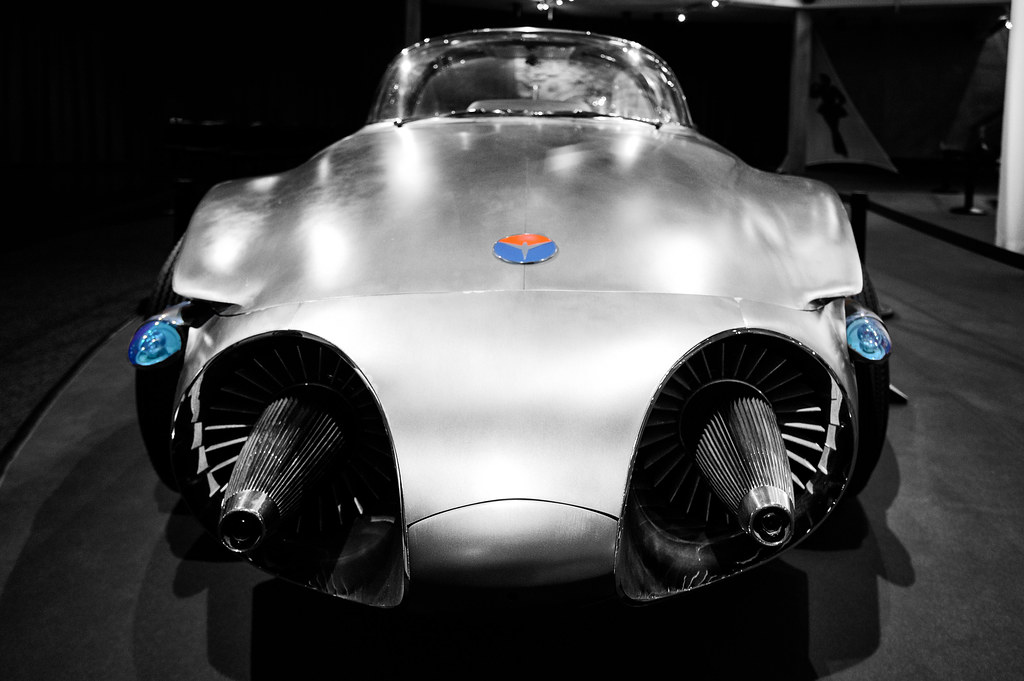
4. **1956 General Motors Firebird II: A Four-Wheeled Jet Aircraft for the Family**The fascination with aviation continued to soar through the 1950s, reaching an extraordinary peak with the 1956 General Motors Firebird II. As the second of four Firebird concepts, this vehicle pushed the metaphor of the jet plane to its absolute limits, transforming it into a four-seat family sedan that looked like it belonged on a runway rather than a highway. It was an unapologetic vision of a completely reimagined future, executed with daring imagination.
What truly set the Firebird II apart was its propulsion system: it was actually powered by a jet engine, specifically a Whirlfire GT-304 gas turbine. This remarkable engine produced a formidable 200 horsepower at an astounding 35,000 rpm, translating the raw power and exhilaration of jet flight into the automotive realm. The body itself was constructed from titanium, an advanced, lightweight material that further emphasized its aeronautical inspiration and high-tech aspirations.
The Firebird II was brimming with futuristic features that are still considered advanced today. It boasted a four-wheel independent suspension with disc brakes all around, ensuring superior handling and stopping power. A rearview camera provided enhanced visibility, while a four-zone climate control system offered personalized comfort for all occupants. Perhaps most strikingly, the Firebird II even featured an autonomous driving mode, designed to follow metal strips embedded in the pavement, predicting an era of self-driving cars decades in advance.
GM’s vision for the Firebird II extended to a two-way communications system, allowing occupants to obtain directions or make motel reservations – an astonishingly accurate prediction of the OnStar system that would debut precisely forty years later. This concept car was a holistic encapsulation of a future where technology would seamlessly integrate into daily life, offering convenience, safety, and a profound sense of advancement. Its audacious vision perfectly aligns with the speculative and forward-looking nature characteristic of Spielberg’s most celebrated cinematic creations.
Car Model Information: 2022 Lincoln Aviator Reserve AWD
Categories: All articles with unsourced statements, Articles with short description, Articles with unsourced statements from June 2014, Cars powered by gas turbines, Commons category link is on Wikidata
Summary: The General Motors Firebird comprises a quartet of prototype cars that General Motors (GM) engineered for the 1953, 1956, and 1959 Motorama auto shows. The cars’ designers, headed by Harley Earl, took Earl’s inspiration from the innovations in fighter aircraft design at the time. General Motors never intended the cars for production, but rather to showcase the extremes in technology and design that the company was able to achieve.
GM preserved the prototype cars at the GM Heritage Center in Sterling Heights, Michigan. Models of the cars are in the permanent collection of the Henry Ford Museum in Dearborn, and the cars still make regular appearances at car shows.
The tradition of offering prototype vehicles continued with the Pontiac Banshee series. From 1967 to 2002, the Pontiac division of GM marketed its Firebird line of pony cars, which had no direct relation to these series of Firebird concept cars.
Get more information about: General Motors Firebird
Buying a high-performing used car >>>
Brand: General Motors Model: Firebird II
Price: $39,000 Mileage: 66,933 mi.
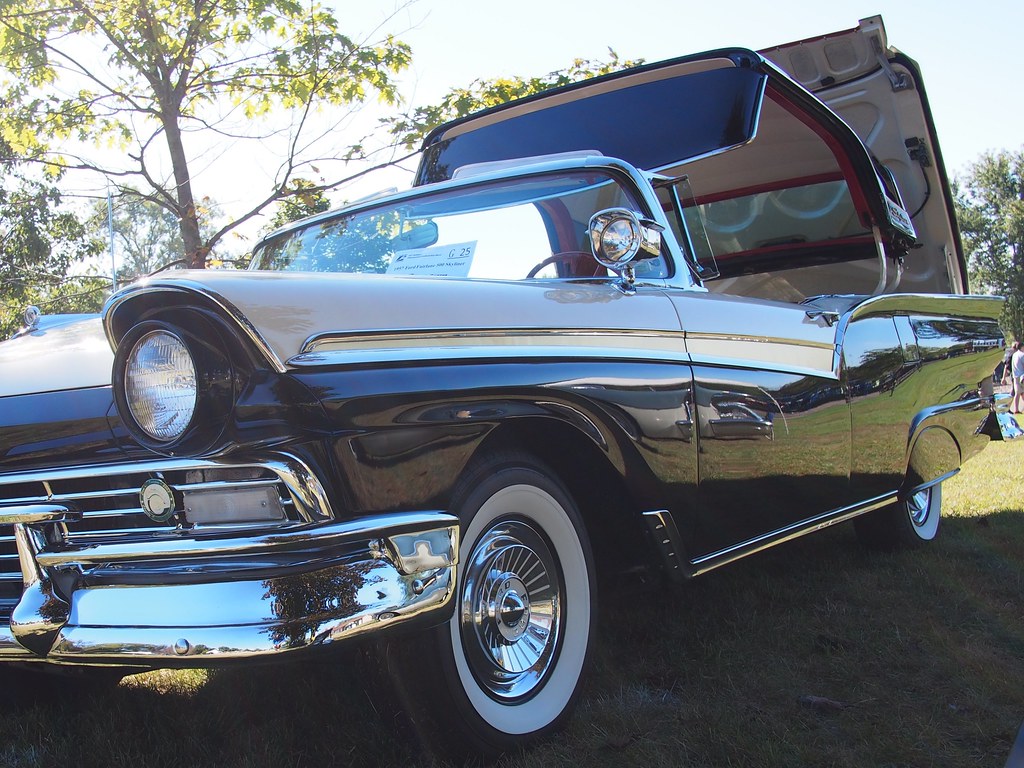
5. **1957 Ford Nucleon: Atomic Dreams for the Open Road**The 1950s were an era captivated by the potential of atomic energy, and this fascination extended to the automotive world with Ford’s audacious 1957 Nucleon concept. This was Ford’s speculative answer to a world where gasoline was obsolete, an idea that, in retrospect, sounds remarkably familiar in our current search for alternative fuels. The Nucleon was designed to be an atoms-for-peace-powered car, a vision of nuclear power harnessed for personal transportation.
Ford envisioned the Nucleon housing a small reactor that would power the car for an incredible 5,000 miles without the need to refuel. Once depleted, the reactor would simply be exchanged for another at a dedicated service station, a concept that echoes modern battery-exchange schemes for electric vehicles. This boldly futuristic idea aimed to revolutionize long-distance travel, removing the constraints of traditional fossil fuels and promising unprecedented range.
The design of the Nucleon was crafted to ingeniously disguise and address the potential issues associated with a nuclear-powered vehicle. Passengers were positioned as far as possible from the reactor, situated in the rear of the car, emphasizing safety in this radical new paradigm. The wheels were also strategically positioned to carry the immense load of the car’s heavy lead shielding, necessary to contain radiation and protect occupants.
While the Nucleon was presented as a mock-up rather than a fully functional vehicle, its importance lies in its imaginative leap into a future that, however impractical in its time, forced a contemplation of truly revolutionary energy sources. This concept represents the ultimate in speculative design, mirroring the kind of audacious, world-altering visions often explored in Spielberg’s most thought-provoking science fiction films, where technology transforms the very fabric of society.
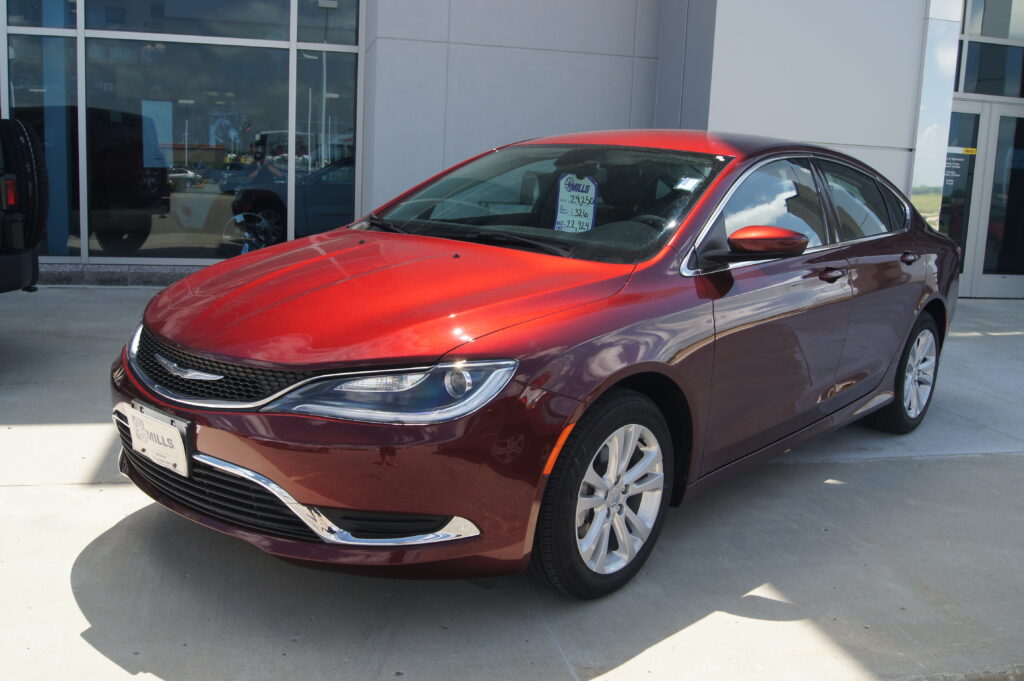
6. **1963 Chrysler Turbine Car: Real-World Testing of a Revolutionary Powertrain**Unlike many of its purely conceptual contemporaries, the 1963 Chrysler Turbine Car stands out as a genuine, drivable vehicle that underwent extensive real-world evaluation. Chrysler embarked on serious experimentation with gas-turbine cars in the early 1960s, culminating in the production of 50 such vehicles. These cars were not tucked away in secret labs; rather, 200 ordinary families used them as daily drivers over a three-year period, tasked with evaluating the feasibility of jet-engine power for everyday transportation.
The Turbine cars proved remarkably reliable during their extensive trial, showcasing the potential of this innovative powertrain. Furthermore, their distinctive styling provided a clear preview of the aesthetic direction Chrysler cars would take in the mid-to-late 1960s, demonstrating how advanced concepts could directly influence production models. The sleek lines and unique details offered a vision of modernity that resonated with the era’s progressive spirit.
Despite their impressive reliability and forward-thinking design, the Turbine cars ultimately faced insurmountable challenges. Fuel economy emerged as a significant problem, even by 1960s standards, consuming fuel at a rate that made them economically unviable for mass production. Chrysler continued to experiment with gas turbines until the late 1970s, but by then, back-to-back energy crises and a burgeoning ecological movement made it abundantly clear that the powertrain’s meager fuel economy and high emissions rendered it impractical for widespread automotive use.
Nevertheless, the Chrysler Turbine Car remains a monumental example of pushing technological boundaries through extensive, real-world testing. It represents a bold attempt to deliver a truly futuristic experience to consumers, even if the technology wasn’t yet mature enough for prime time. This blend of daring vision, practical application, and learning from limitations is a narrative arc that would undoubtedly appeal to Steven Spielberg’s appreciation for innovation and the stories behind technological advancement.
Propelling into the Modern Era: 7 Groundbreaking Concept Cars Shaping High-Performance, Aerodynamic, and Sustainable Futures, Through Spielberg’s Lens of Innovation.
As we transition from the audacious mid-century experiments, the narrative of concept cars evolves, embracing new paradigms of performance, aerodynamics, and, eventually, a nascent understanding of sustainable design. This next chapter delves into creations that, while rooted in their respective eras, continued to challenge conventions and project compelling visions of what mobility could become. These vehicles, much like the meticulously crafted worlds of Steven Spielberg, showcase an unwavering commitment to pushing boundaries, demonstrating how technology and imaginative design converge to redefine expectations.
From the sleek lines that promised blistering speed to innovative powertrains that hinted at future energy solutions, these concept cars are more than just prototypes. They are milestones in automotive history, each embodying a distinct interpretation of the future. Their impact extends beyond mere aesthetics, often serving as critical testbeds for engineering principles and societal shifts, echoing Spielberg’s ability to weave complex themes into universally resonant stories.
Car Model Information: 2022 Lincoln Aviator Reserve AWD
Name: Chrysler Turbine Car
Assembly: Detroit,United States
Caption: Walter P. Chrysler Museum
Manufacturer: Chrysler Corporation
Production: 1963–1964,55 produced
Class: Concept car
BodyStyle: coupé
Layout: Front-engine, rear-wheel-drive layout
Engine: Chrysler turbine engines
Width: 72.9 in
Abbr: on
Height: 53.5 in
Wheelbase: 110 in
Length: 201.6 in
Weight: convert
Designer: Elwood Engel
Transmission: TorqueFlite
Categories: Articles with Internet Archive links, Articles with short description, Cars powered by gas turbines, Chrysler concept vehicles, Chrysler vehicles
Summary: The Chrysler Turbine Car is an experimental two-door hardtop coupe powered by a turbine engine and was manufactured by Chrysler from 1963 to 1964. Italian design studio Carrozzeria Ghia constructed the bodywork, and Chrysler completed the final assembly in Detroit. A total of 55 cars were manufactured: five prototypes and a limited run of fifty cars for a public user program. All have a signature metallic paint named “turbine bronze”, roughly the color of root beer. The car was styled by Elwood Engel and Chrysler studios. They featured power brakes, power steering, and a TorqueFlite transmission.
The Chrysler turbine engine program that produced the Turbine Car began during the late 1930s and created prototypes that completed long-distance trips in the 1950s and early 1960s. The A-831 engines that powered the Ghia-designed Turbine Car could operate on many fuels, required less maintenance, and lasted longer than conventional piston engines. However, they were much more expensive to produce.
After testing, Chrysler conducted a user program from October 1963 to January 1966 that involved 203 drivers in 133 cities in the United States cumulatively driving more than one million miles (1.6 million km). The program helped the company determine problems with the cars, notably with their complicated starting procedure, relatively unimpressive acceleration, and sub-par fuel economy and noise. The experience also revealed the advantages of the turbine engines, including their remarkable durability, smooth operation, and relatively modest maintenance requirements.
After the user program ended in 1966, Chrysler reclaimed the cars and destroyed all but nine; Chrysler kept two cars, six are displayed at museums in the United States, and one is in comedian Jay Leno’s private collection. Chrysler’s turbine engine program ended in 1979, mainly due to the failure of the engines to meet government emissions regulations, relatively poor fuel economy, and as a condition of receiving a government loan in 1979.
Get more information about: Chrysler Turbine Car
Buying a high-performing used car >>>
Brand: Chrysler Model: Turbine Car
Price: $39,000 Mileage: 66,933 mi.

7. **1964 Pontiac Banshee: The Rebel’s Vision of Performance**Emerging from an era ripe with internal automotive rivalries, the 1964 Pontiac Banshee, known internally as the XP-833, stands as a testament to the vision of John DeLorean. His aim was audacious: to create a two-seat sports car that would challenge the established hierarchy within General Motors. The Banshee represented a defiant push against corporate conservatism, aiming for a lighter, more agile performance machine.
Several styling mockups were developed, showcasing a design language that was both elegant and aggressive. Notably, two fully-functional Banshee concept cars were brought to life: a six-cylinder coupe and a V-8-powered convertible. These operational prototypes were crucial in demonstrating the car’s potential, hinting at a performance envelope that was truly exhilarating.
The Banshee’s design bore a striking resemblance to a certain other highly acclaimed two-seat halo product from GM, but with a critical difference: it was a quarter-ton lighter. This significant weight advantage suggested it would have outperformed its sibling, a factor that ultimately led GM’s top brass to order its termination. Despite these directives, DeLorean famously managed to hide the prototypes, preserving these pieces of rebellious automotive history, which astonishingly still exist today.
The influence of the Banshee cannot be overstated; its styling cues were deeply ingrained in the third-generation Corvette, and its DNA can be traced to the upcoming ’67 Firebird. It represents a bold, independent spirit in design and engineering, a characteristic that resonates with Spielberg’s own career, often marked by the courageous pursuit of unconventional narratives and technological innovation against existing industry norms. The Banshee, therefore, wasn’t just a car; it was a statement about what was possible when designers dared to dream beyond the status quo.
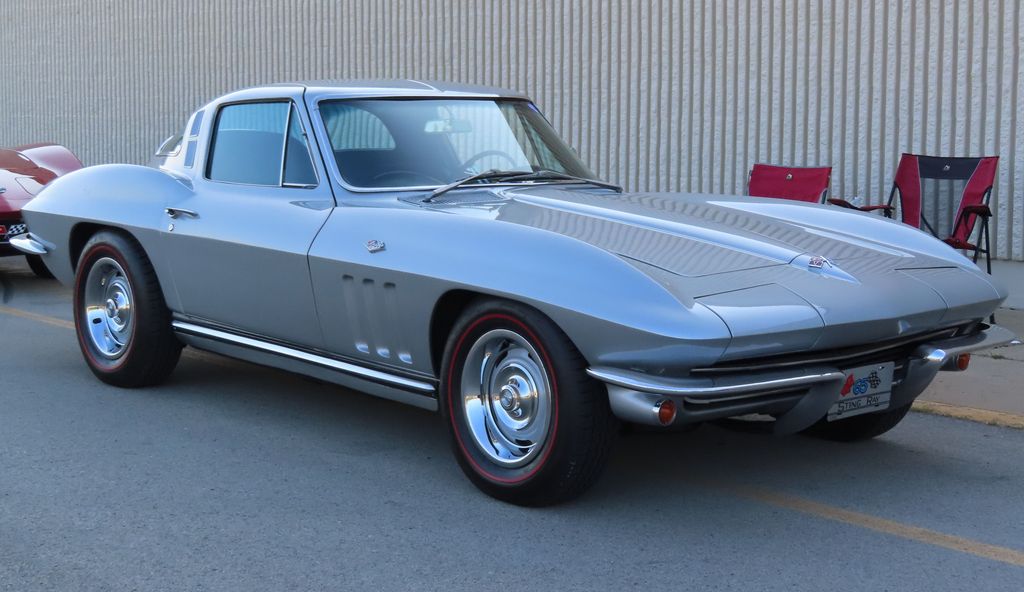
8. **1965 Corvette Mako Shark II: A Glimpse into the Future of American Muscle**In a rare and exciting move, General Motors offered the public an early, nearly undisguised preview of a future production model with the 1965 Corvette Mako Shark II. As one of two Corvette concept cars to bear the evocative Mako Shark name, this iteration was a bold declaration of the design direction for the new-for-1968 Corvette, a full two years before its official launch. This transparency, unusual for GM, fueled immense anticipation among enthusiasts and the broader public alike.
The delay in the C3 Corvette’s debut, originally planned for 1966 as a ’67 model, ultimately shifted its introduction to the summer of 1967 for the ’68 model year. Regardless of the production timeline, the Mako Shark II itself remained an aesthetically stunning concept car, captivating audiences with its fluid lines and aggressive stance. Its design showcased tall fenders and a bulging hood, hinting at a slightly different, perhaps even more dramatic, direction the third-generation Corvette’s design could have embraced.
The Mako Shark II embodied a powerful visual statement, blending the raw aggression of a predatory fish with the sleek sophistication of cutting-edge automotive design. It represented a direct lineage of American performance cars, providing a tangible vision of how future generations would continue to push both aesthetic and engineering boundaries. For a filmmaker like Spielberg, who expertly crafts visuals to tell stories, the Mako Shark II’s overt foreshadowing and dramatic presentation would undoubtedly appeal.
Its enduring appeal lies in its audacious spirit and its role as a genuine precursor to one of America’s most iconic sports cars. The Mako Shark II wasn’t merely a design exercise; it was a promise, a tangible blueprint for an exhilarating future that eventually roared into production, influencing automotive aesthetics for years to come and reinforcing the idea that groundbreaking visions, whether cinematic or automotive, can indeed materialize.
Car Model Information: 2022 Lincoln Aviator Reserve AWD
Name: Mako Shark Concept
Caption: Mako Shark II in front of the first — ,GM Technical Center in Warren, Michigan
Manufacturer: Chevrolet
Production: 1962
Class: Concept car,sports car
BodyStyle: convertible (car)
Related: Chevrolet Corvette (C2),Chevrolet Corvette (C3)
Designer: Bill Mitchell (designer),Larry Shinoda
Categories: All articles with style issues, Articles with short description, Chevrolet Corvette, Chevrolet concept vehicles, Commons category link is locally defined
Summary: The XP-755 concept car, also known as the Mako Shark, was designed by Larry Shinoda under the direction of General Motors Styling and Design head Bill Mitchell. With the 1963 Corvette C2 design locked down, in 1961 as a concept for future Chevrolet Corvette the groundwork for the XP-755 was laid down. Building on the design of the 1958 XP-700 “double bubble”, the XP-755 added design elements of the soon to be released C2 Corvette. In keeping with the name, the streamlining, pointed snout, and other detailing was partly inspired by the sleek, fast-moving shortfin mako shark. The ’61 Corvette tail was given two additional tail lights (six total) for the concept car. The concept was also inspired by Bill Mitchell’s 1959 Stingray racer XP-87 which also influenced the 1963 Corvette Sting Ray. Charles M. Jordan’s son, Mark reports that the XP-755 was built out of the 1958 XP-700 Corvette show-car.
The Mako Shark debuted at the New York Coliseum at the 1962 6th International Automobile Show, and the car was a success on the auto show circuit. With many of the Mako’s design elements making into production on future Corvettes, it was successful in building hype for the forthcoming next generation of Corvette.
Like many show cars, the Mako Shark underwent styling and detail changes over time. The hood and front facia were modified and the interior was updated. The car also lost the distinctive “double-bubble” canopy. The car was retroactively dubbed the Mako Shark I when the Mako Shark II debuted. The car now resides in the GM Heritage Collection.
Get more information about: Mako Shark (concept car)
Buying a high-performing used car >>>
Brand: Corvette Model: Mako Shark II
Price: $39,000 Mileage: 66,933 mi.
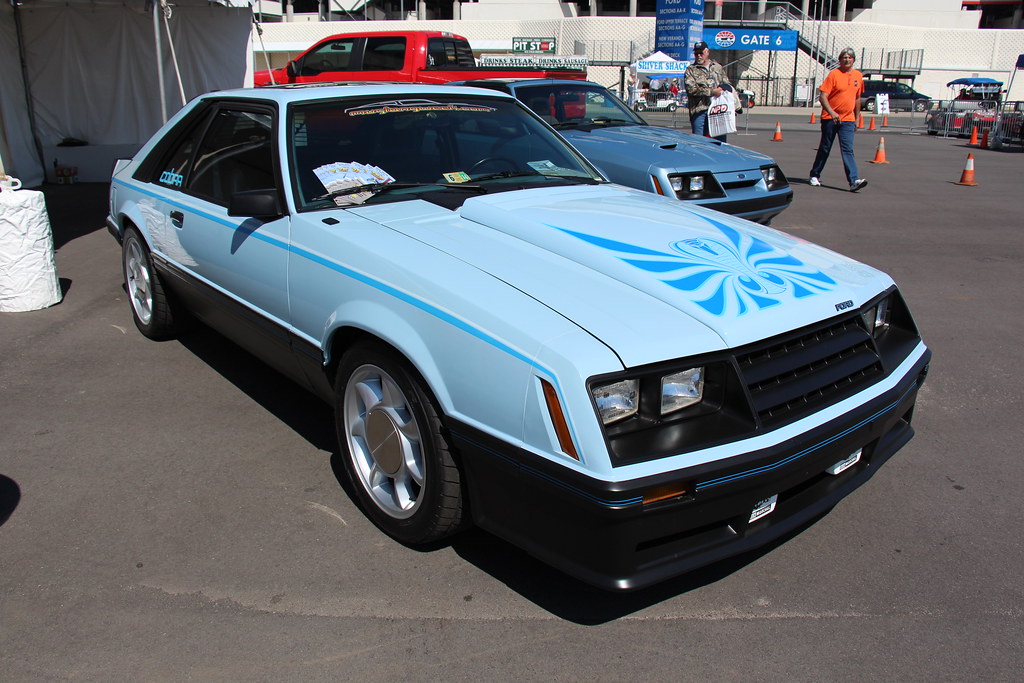
9. **1981 Ford Probe III: Aerodynamics Redefined for the Masses**The 1981 Ford Probe III marked a significant departure from conventional automotive aesthetics, heralding a new era of aerodynamic design that would redefine mainstream vehicles. This was the third in a series of concepts named ‘Probe,’ developed by Ford of Europe with the explicit goal of preparing its customer base for the radical new Sierra. Crucially, the Probe III also offered a clear signal to American consumers about the stylistic shifts that were imminent in their own automotive landscape.
Its groundbreaking features included flush glass, meticulously integrated into the bodywork to reduce drag, alongside ‘Euro-style’ aerodynamic headlights that merged seamlessly with the car’s profile. The doors were ingeniously designed to cut into the roofline, further enhancing the car’s sleekness and structural rigidity. A refreshing absence of chrome, a staple of earlier designs, underscored a commitment to a cleaner, more modern aesthetic, all of which became defining characteristics of the paradigm-shifting 1986 Ford Taurus.
Beyond these overt aerodynamic advancements, subtle yet influential details like the Probe’s louvered taillights also left their mark. These distinctive lights were subsequently copied for the Fox-based 1987 Ford Mustang GT, demonstrating the concept’s widespread impact on production models. The Probe III was a masterclass in how careful design could lead to both aesthetic appeal and improved efficiency, forecasting a future where form and function were inextricably linked.
This concept car was not just a design study; it was a bold statement on the importance of airflow and efficiency, translating complex engineering principles into a visually appealing and mass-producible form. Its profound influence on the highly successful Taurus proved that the future of automotive design could be both stylish and scientifically informed, aligning with Spielberg’s own fascination for innovations that reshape everyday realities.
Car Model Information: 2022 Lincoln Aviator Reserve AWD
Name: Ford Sierra
Aka: Merkur XR4Ti
Manufacturer: Ford of Europe
Production: 1982–1993
Designer: Uwe Bahnsen,Bob Lutz (businessman),Patrick le Quément
Assembly: Pacheco Stamping and Assembly,Genk Body & Assembly,Cork City,Lower Hutt,Valencia, Venezuela
Class: Mid-size car
BodyStyle: liftback,Sedan (car),station wagon,car-derived van
Related: Ford Scorpio,Ford P100,Merkur XR4Ti
Layout: Front-engine, rear-wheel-drive layout,rear-wheel drive
Engine: ubl
Transmission: Automatic transmission
Wheelbase: cvt
Length: cvt
Width: cvt
Height: cvt
Predecessor: Ford Cortina#Mark V,Ford Taunus TC#Taunus TC3 (1979–1982)
Successor: Ford Mondeo (first generation)
Categories: 1980s cars, 1990s cars, All-wheel-drive vehicles, All Wikipedia articles written in British English, All articles with specifically marked weasel-worded phrases
Summary: The Ford Sierra is a mid-size/large family car manufactured and marketed by Ford of Europe from 1982–1993. It was launched as a three-door or five-door liftback or a five-door estate car, with a car-derived van variant added in 1984 and the four-door Sierra Sapphire saloon car introduced in 1987 when the range was facelifted. The engine is mounted in the front with rear-wheel drive on most models and four-wheel drive on certain models.
It was designed by Uwe Bahnsen, Robert Lutz and Patrick Le Quément, and was noted for its aerodynamic styling. It has a drag coefficient of 0.34, a significant improvement over its predecessors. The Sierra debuted at the 1982 British International Motor Show in Birmingham, then appeared at the 1982 Paris Salon de l’Automobile. Sales began on 15 October 1982, replacing the Ford Taunus TC3 and Ford Cortina Mark V. The Sierra’s aerodynamic styling and the initial absence of a saloon alienated many conservative buyers, including company car drivers.
Developed under the internal code name “Project Toni”, the Sierra name is derived from the Spanish word for a mountain range. Most cars were manufactured in Belgium and the United Kingdom, although Sierras were also assembled in Cork, Ireland, Argentina, Venezuela, South Africa, and New Zealand.
Get more information about: Ford Sierra
Buying a high-performing used car >>>
Brand: Ford Model: Probe III
Price: $39,000 Mileage: 66,933 mi.
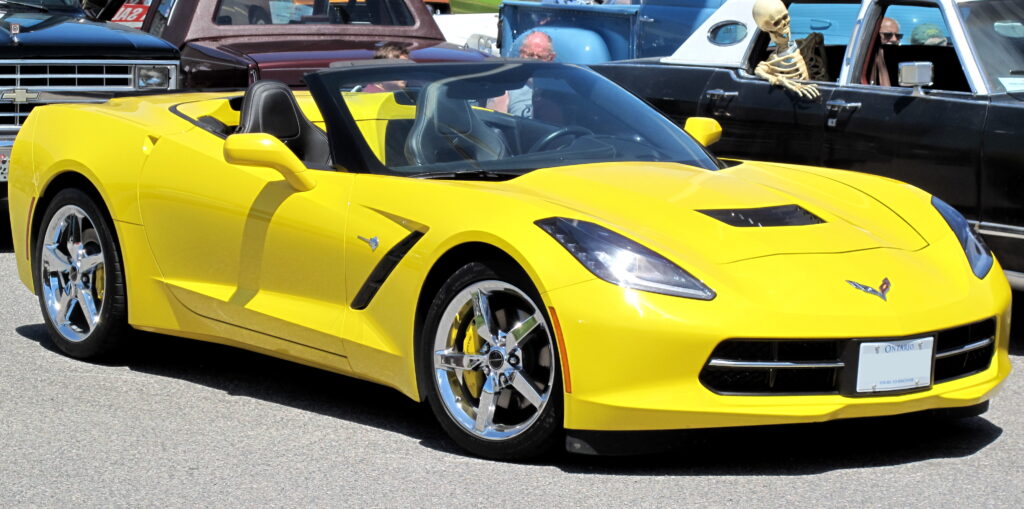
10. **1986 Chevrolet Corvette Indy: Mid-Engine Dreams and Carbon Fiber Realities**The 1986 Chevrolet Corvette Indy stands as one of the most striking and visionary Corvette concepts ever conceived, representing a bold leap into performance and material science. Introduced at a time when most cars still retained an upright, squared-off posture, even compared to the sleek-for-its-time 1986 Ford Taurus, the Corvette Indy appeared remarkably smooth and futuristic, defying contemporary design norms.
This concept was a showcase of advanced engineering, featuring a body constructed from carbon fiber, a lightweight yet incredibly strong material that was far ahead of its time for mainstream automotive application. Under its sculpted hood, a small-displacement twin-turbo V-8 engine was said to churn out more than 600 horsepower, a formidable output that underscored its high-performance aspirations and hinted at the supercar capabilities of future Corvettes.
The Corvette Indy was more than just a static display; it led to the creation of the fully-functional CERV III, further cementing its role as a critical step in the evolution of the iconic American sports car. Its influence is profoundly visible in today’s mid-engine C8 Corvette, demonstrating how a truly visionary concept can lay the groundwork for decades of innovation. The car’s smooth, almost liquid lines retain a timeless appeal, still looking remarkably futuristic even today.
The enduring impact of the Corvette Indy highlights how GM dared to imagine a significantly different future for its flagship sports car, integrating cutting-edge materials and a revolutionary mid-engine layout. This kind of audacious foresight, blending advanced technology with a compelling aesthetic to redefine performance, resonates deeply with Steven Spielberg’s approach to filmmaking, where visual spectacle often serves as a vehicle for exploring technological and human potential.
Car Model Information: 2022 Lincoln Aviator Reserve AWD
Name: Chevrolet Corvette
Caption: 2021 Chevrolet Corvette C8
Manufacturer: Chevrolet
Production: 1953–present
ModelYears: bulleted list
Assembly: bulleted list
Class: Sports car
BodyStyle: coupé
Layout: Front-engine, rear-wheel-drive layout,Rear mid-engine, rear-wheel-drive layout
Categories: 1950s cars, 1960s cars, 1970s cars, 1980s cars, 1990s cars
Summary: The Chevrolet Corvette is a line of American two-door, two-seater sports cars manufactured and marketed by General Motors under the Chevrolet marque since 1953. Throughout eight generations, indicated sequentially as C1 to C8, the Corvette is noted for its performance, distinctive styling, lightweight fiberglass or composite bodywork, and competitive pricing. The Corvette has had domestic mass-produced two-seater competitors fielded by American Motors, Ford, and Chrysler; it is the only one continuously produced by a United States auto manufacturer. It serves as Chevrolet’s halo car.
In 1953, GM executives accepted a suggestion by Myron Scott, then the assistant director of the Public Relations department, to name the company’s new sports car after the corvette, a small, maneuverable warship. Initially, a relatively modest, lightweight 6‑cylinder convertible, subsequent introductions of V8 engines, competitive chassis innovations, and rear mid-engined layout have gradually moved the Corvette upmarket into the supercar class. In 1963, the second generation was introduced in coupe and convertible styles. The first three Corvette generations (1953–1982) employed body-on-frame construction, and since the C4 generation, introduced in 1983 as an early 1984 model, Corvettes have used GM’s unibody Y‑body platform. All Corvettes used front mid-engine configuration for seven generations, through 2019, and transitioned to a rear mid-engined layout with the C8 generation.
Initially manufactured in Flint, Michigan, and St. Louis, Missouri, the Corvette has been produced in Bowling Green, Kentucky, since 1981, which is also the location of the National Corvette Museum. The Corvette has become widely known as “America’s Sports Car.” Automotive News wrote that after being featured in the early 1960s television show Route 66, “the Corvette became synonymous with freedom and adventure,” ultimately becoming both “the most successful concept car in history and the most popular sports car in history.”
Get more information about: Chevrolet Corvette
Buying a high-performing used car >>>
Brand: Chevrolet Model: Corvette Indy
Price: $39,000 Mileage: 66,933 mi.

11. **1989 Dodge Viper RT/10: Ignition of Desire, Production Realized**Few concept cars in modern history have ignited such an immediate and overwhelming desire for production as the 1989 Dodge Viper RT/10. This concept emerged during a period when Chrysler showrooms were predominantly filled with various iterations of the utilitarian K-car, making the Viper’s appearance a dramatic and exhilarating contrast. It was a potent antidote to automotive conventionality, capturing imaginations and demanding attention.
With its sinewy lines, aggressively minimalist interior, and a ridiculously oversized V-10 engine rumbling beneath its long hood, the Viper RT/10 was an unashamedly modern-day Cobra. It commanded everyone’s attention, not just with its raw power projections but with its visceral, unapologetic presence. Chrysler, recognizing the immense public enthusiasm and clear market demand, made the bold decision to fast-track the Viper into production, a testament to the concept’s extraordinary impact.
Thirty years later, the Viper, both in its initial concept form and its subsequent production iterations, remains an embodiment of automotive awesomeness. It transcended its role as a mere concept to become a legendary road-going machine, representing American performance at its most untamed. The Viper demonstrated how a truly captivating concept could directly translate into a market success, challenging preconceptions of what a brand could achieve.
This immediate transition from concept to cultural icon aligns perfectly with Spielberg’s knack for creating narratives that capture the public imagination instantly and endure for generations. The Viper RT/10 proved that sometimes, the most groundbreaking vision is the one that dares to be unbridled and raw, fostering a direct connection with an eager audience, much like a blockbuster film that defines an era.
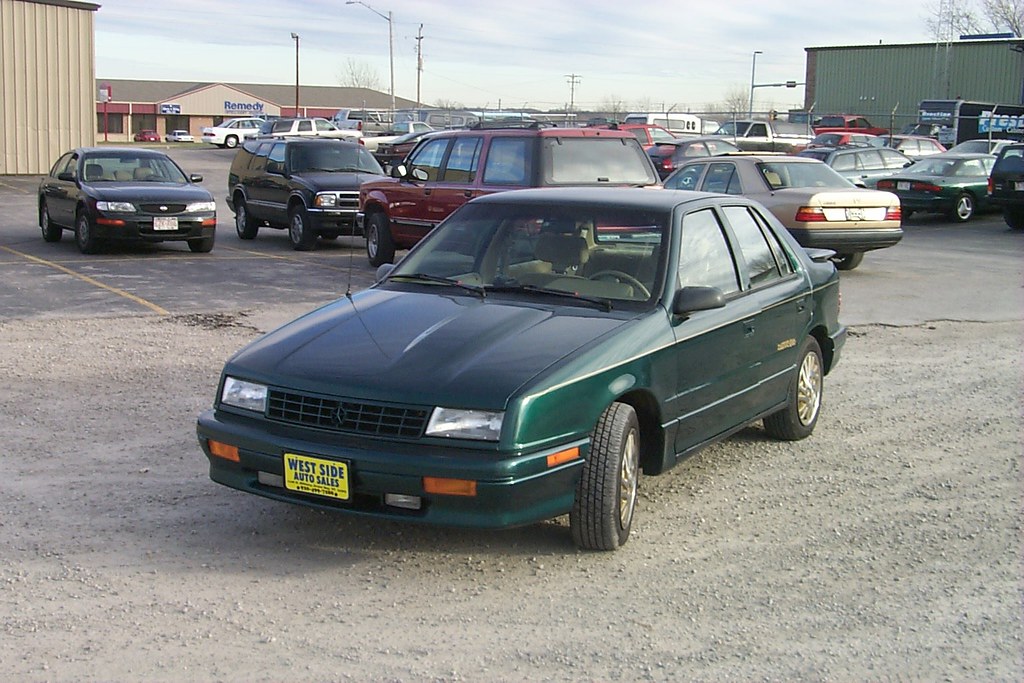
12. **1993 Plymouth Prowler: A Retro-Futuristic Experiment in Production**The early 1990s saw significant shifts in the street-rodding subculture, and this evolving landscape may have influenced Chrysler’s decision to follow up the wildly successful Viper with a retro-themed street rod: the 1993 Plymouth Prowler. As a show car, the Prowler was every bit as much a jaw-dropper as the Viper, capturing attention with its distinctive open-wheel design and vintage aesthetic fused with modern engineering.
Beyond its captivating appearance, the Prowler had critical ulterior motives. It served as a test-bed for new assembly methods, allowing Chrysler to experiment with innovative manufacturing techniques that they hoped to apply to their mainstream cars. This blend of avant-garde production processes with a nostalgic design was a daring proposition, showcasing Chrysler’s commitment to pushing both technological and stylistic boundaries.
Its striking design and the allure of a production street rod proved to be a hit with the public. Consequently, Chrysler made the decision to put the Plymouth Prowler into production for the 1997 model year, a bold move that further cemented the automaker’s reputation for turning radical concepts into tangible realities. The Prowler even outlived the Plymouth brand, continuing its run as the Chrysler Prowler in 2001 after Plymouth was wound down, a testament to its unique appeal and forward-thinking production strategy.
The Prowler represents a fascinating intersection of past and future, demonstrating how an appreciation for automotive heritage can inspire thoroughly modern production techniques and capture public imagination. This unique blend of honoring tradition while embracing innovation is a hallmark of Spielberg’s films, which frequently explore historical narratives through a contemporary lens or create timeless stories with cutting-edge technology.
Car Model Information: 1997 Plymouth Prowler Roadster
Name: Plymouth Prowler
Manufacturer: Chrysler Corporation
Production: 1997–2002,11,702 produced
Assembly: Detroit, Michigan
Class: Sports car
Layout: Front-engine, rear-wheel-drive layout#Front mid-engine, rear-wheel-drive layout
Platform: Chrysler PR platform
BodyStyle: Roadster (automobile)
Engine: Chrysler SOHC V6 engine#3.5,V6 engine
Transmission: Ultradrive#A606/42LE,automatic transmission
Aka: Chrysler Prowler (2000–2002)
Wheelbase: 113.3 in
Abbr: on
Length: 165.3 in
Width: 76.5 in
Height: 50.9 in
Weight: 2800 lb
Successor: Chrysler Crossfire
Designer: Tom Gale (designer)
Caption: 2000 Plymouth Prowler
Categories: 2000s cars, All articles needing additional references, All articles with unsourced statements, Articles needing additional references from November 2015, Articles with short description
Summary: The Plymouth Prowler, later the Chrysler Prowler, is a two-door, two passenger sports car, manufactured and marketed by DaimlerChrysler for model years 1997-2002 — widely known for its hand-crafted aluminum bodywork and its retro-hot rod styling with open, Indy racer-style front wheels.
Based on the 1993 concept car of the same name, Chrysler offered the Prowler over a single generation, with a V6 front-engine, and a rear-transaxle, rear-drive configuration — reaching a total production of 11,702 units.
Get more information about: Plymouth Prowler
Buying a high-performing used car >>>
Brand: Plymouth Model: Prowler
Price: $34,998 Mileage: 3,142 mi.
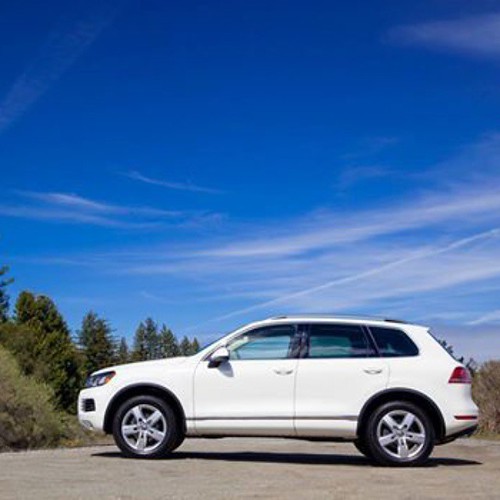
13. **1994 Volkswagen Concept One: The Rebirth of an Icon, Redefined for a New Era**While concepts like the Viper and Prowler captured the hearts of performance enthusiasts and hot-rodders, the 1994 Volkswagen Concept One achieved something arguably even more profound: it stole the hearts and minds of everyone else. This adorable homage to the beloved air-cooled Volkswagen Beetle was an instant worldwide hit, resonating deeply with a broad audience nostalgic for the charm and accessibility of the original, but eager for a modern interpretation.
The Concept One’s success was so undeniable that Volkswagen quickly moved to put the car into production, faithfully retaining many of its whimsical features, including the iconic dashboard-mounted bud vase. The resulting New Beetle was an instant commercial success, effectively demonstrating that strong emotional connection and a fresh, retro-inspired design could unlock massive market appeal, despite minor critiques such as the engine’s relocated position.
Though Volkswagen did encounter challenges in attracting male buyers, leading some to unfairly label it a “chick car,” the New Beetle’s overall success was undeniable. It stayed in production for more than a decade with only minor design changes, a remarkable feat that itself served as a rather nice homage to the original Beetle’s longevity and timeless design. It proved that a sustainable future in automotive design could stem from reimagining beloved classics for modern sensibilities.
The Concept One was a triumph of design, proving that a respectful, imaginative reinterpretation of a classic could create a new icon. This ability to tap into collective memory while forging a new path forward—a narrative skill that Spielberg has mastered throughout his career—allowed the Concept One to become a beacon of approachable, stylish, and emotionally resonant automotive design, paving the way for a generation of retro-inspired vehicles and demonstrating the power of design to captivate diverse audiences across the globe.
From the earliest daring experiments of Harley Earl to the culturally resonant revivals of the late 20th century, these thirteen concept cars collectively paint a vibrant picture of an industry in perpetual motion, relentlessly pursuing the next frontier. They are tangible manifestations of audacious dreams, each a testament to human ingenuity and the ceaseless drive to redefine what’s possible on four wheels. Much like the visionary worlds brought to life by Steven Spielberg, these vehicles inspire awe, provoke thought, and ultimately shape our expectations for the future, proving that the most compelling narratives, whether cinematic or automotive, are always those that dare to look beyond the horizon. They remind us that innovation is not just about invention, but about the art of making the impossible feel inevitable, driving us all towards a future that is continually being imagined, sculpted, and brought to thrilling reality.



